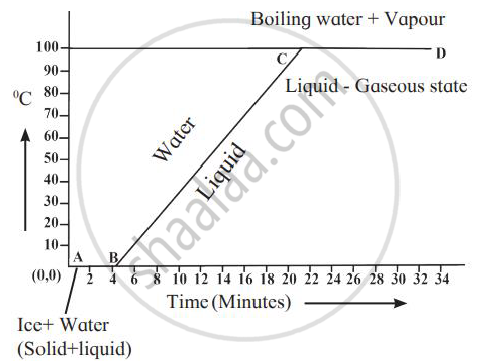Advertisements
Advertisements
Question
Why water get cooled in a ‘Surahi’ in hot season?
Solution
‘Surahi’ is made of clay which is porous (being not glazed) and so water oozes out (creeps out) and wets its entire surface. Form its outer surface, water get evaporated taking latent heat needed for evaporation from inside water as well as surrounding air and so the temperature of inside water falls.
APPEARS IN
RELATED QUESTIONS
State the effect of an increase of impurities on the melting point of ice.
1 g ice of 0℃ melts to form 1 g water at 0℃. State whether the latent heat is absorbed or given out by ice.
Which has more heat: 1 g ice at 0℃ or 1g water 0℃? Give reason.
Explain the following:
The heat supplied to a substance during it change of state, does not cause any rise in its temperature.
A molten metal of mass 150 g is kept at its melting point 800℃. When it is allowed to freeze at the same temperature, it gives out 75,000 J of heat energy.
- What is the specific latent heat of the metal?
- If the specific heat capacity of metal is 200 J kg-1 K-1, how much additional heat energy will the metal give out in cooling to -50℃?
Explain the following temperature vs time graph.

What is the name given to the energy absorbed during a phase change?
Define specific latent heat of vaporization of a substance.
When 1 g of ice at 0 °C melts to form 1 g of water at 0 °C then, is the latent heat absorbed by the ice or given out by it?
State the main precautions to be taken in finding the latent heat of steam.
Define boiling point of a liquid.
Write the name.
The phase in which solid substances are converted into liquid.
Define specific latent heat capacity
Who introduced the term latent heat?
Observe the following graph and answer the following questions:

- What does the graph represent?
- What does the line AB represent?
- What does the line BC represent?
20 g of ice at 0°C absorbs 10,920 J of heat energy to melt and change to water at 50°C. Calculate the specific latent heat of fusion of ice. Specific heat capacity of water is 4200 J kg-1 K-1.
